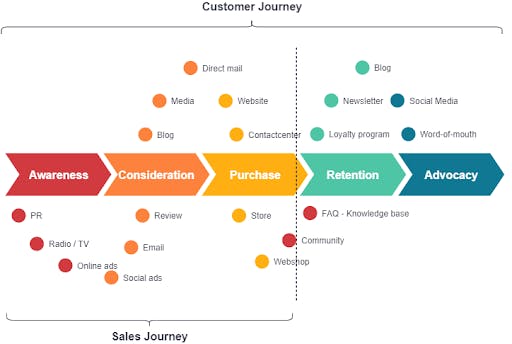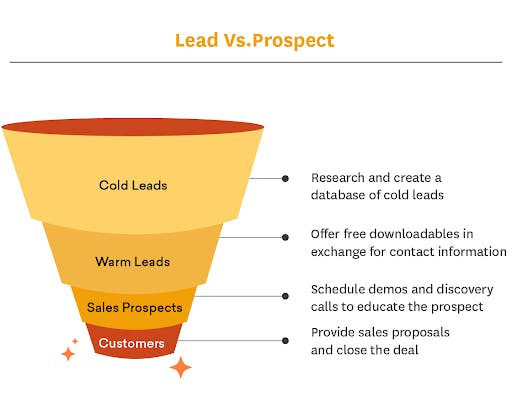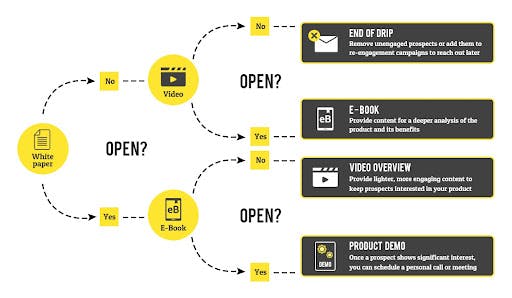Lead nurturing: strategy and tactics, tools, and best practices
Aug 10th, 2021

Contents
What is lead nurturing?
How to create a lead nurturing strategy?
Lead nurturing tools
Best practices for lead nurturing
Nurturing leads is essential for your company’s success as it is directly related to the visitors’ decision to convert into buyers. Once potential customers interact with your brand, you need to capture their attention and provide an exceptional experience that makes them return and further engage with your company. Otherwise, without such a strategy, the business might lose the prospective client.
Lead nurturing is critical for developing a personalized buyers’ journey. You can help prospects solve problems and offer solutions resulting in sales increases and long-term relationships by listening to their needs and wants and providing content specifically tailored for their necessities. Besides personalization, there are a few more strategies to nurture leads, including a multi-touch approach, multi-channel lead nurturing, and timely follow-ups. But first, let’s understand what lead nurturing really is about.

What is lead nurturing?
Lead nurturing is the process of building and maintaining relationships with potential customers from the moment of their first interaction with the brand to the point when they become regular clients. Lead nurturing focuses on considering the prospects’ requirements and delivering the necessary information to raise brand awareness, develop trust and keep contact until potential customers are ready to make a purchase.
The key to success is to educate the prospects by providing content that allows your brand to stand out from the competition in your niche. Lead nurturing campaigns are targeted at potential customers who have already expressed interest in your brand — downloaded a free guide or visited the website. The most common lead nurturing tactics include online surveys, automated emails after newsletter signup, and retargeting campaigns. Using these tactics, the marketers increase the chances that the consumers purchase the product when they have to make the buying decision.
How to create a lead nurturing strategy?
Developing a solid lead nurturing strategy will positively impact the percentage of leads that will turn into your customers. The detailed plan will help you shorten the sales cycle, decrease customer acquisition expenses and improve ROI.
1. Define your target audience
The first step in the lead nurturing strategy is to understand your target customer. Create a buyer persona or the portrait of the potential client who represents your entire audience. Once you identify the ideal customers, you will be able to find the best ways and techniques to reach them. It also helps you understand the problems the clients face before making a buying decision and how to cope with these issues. To develop the target customer profile, consider their typical characteristics, including location, gender, pain points, interests, and needs. The buyer personas should be based on real clients, so you can send emails with short surveys or place the questionnaire on the landing page of your website.
2. Create a customer journey map
Outlining the customer journey map allows you to review the consumer’s path from the moment of recognizing the problem until it is solved through the purchase of the product. With the help of the customer journey map, you can predict the potential customers’ behavior, explain the benefits they’ll receive after the purchase, improve the quality of your marketing communication and create more targeted messages.

3. Build your customer database
One of the essential steps in lead nurturing is creating the customer database by setting up the CRM system. With a customer relationship management system, you will be able to collect information about the prospects, monitor their activities, and track the interactions with your brand. The information received from the CRM system will be helpful in developing the customer profile, gathering data about their demographics, preferred channels, most visited website pages, the frequency of engagement with your company, and the types of content they are most interested in.
4. Score your leads
Lead scoring allows for analyzing the prospects’ level of interest and the probability of purchase. Once you have collected the information about your leads, you can assign them with points from one to ten. You can score prospects depending on the demographics, interest and activity, budget, and buying stage. Using this method, you will understand which leads are ready to buy your product, identify the prospects that are a waste of time, and the ones that require additional education.
5. Create personalized content
Relevant content is crucial for your lead nurturing strategy. So, it is essential to create the targeted content for each phase of the buyers’ journey to educate the customers and encourage them to move further in the sales funnel.

Top-of-the-funnel content focuses on educating and solving readers’ problems. It usually includes social media publications, articles on the frequently asked questions, blog posts, video tutorials, infographics, and buying guides. Middle-of-the-funnel content allows your potential customers to gain a better understanding of your product or service. This content type includes landing pages, webinars, comparisons, and e-books. Finally, bottom-of-the-funnel content intends to help at the purchase stage of the customers’ journey and often includes testimonials, free trials, and product demos.
6. Use marketing automation
It is critical to reach out to your prospects as soon as possible. Automated marketing campaigns will be a good option. Once the potential customer subscribes to your blog or downloads an e-book, the marketing automation software sends the content based on the recent activity, score, or buyer’s journey phase. Automated marketing campaigns can include a single message or series of publications delivered over a certain period. This tactic is perfect for keeping your customers engaged while providing the pieces of content tailored to their preferences.
7. Use multiple channels
The combination of different channels will help you achieve the best possible outcome within your lead nurturing strategy. Share engaging social media posts, employ pay-per-click advertising, leverage retargeting campaigns, and use chatbots to help your customers solve their needs. Publish high-quality content on your website to give the clients the reason to come back, improve SEO rankings and provide the materials to share on social media.
8. Measure your performance
The most important indicators of your lead nurturing strategy efficiency include engagement rates, such as email open rate percentage and CTR, the amount of time needed to move leads in the sales funnel, the number of leads that turned into closed deals, and the average revenue related to these deals. Taking into account these indicators, you can identify the major problems in your strategy, consider the solutions and prepare a plan of action for the future.
9. Make improvements to the process
Analyze the performance metrics to improve the content, add new channels and provide better customer service. Such tactics as cross-selling and upselling based on targeted content allow you to strengthen your relationship with the current clients, increase customer loyalty and improve retention. Consider customer onboarding strategies to get clients acquainted with your solution. Give the necessary information on using the product, provide guides, tutorials, and other resources to address issues.
Further, we will describe some software tools to automate your marketing workflows, simplify the lead nurturing process and convert prospects into paying customers.
Lead nurturing tools
Lead nurturing software usually has many features for tracking, segmenting, and scoring leads, engaging with the audience, organizing customer information, personalizing marketing, automating support, etc. We will review seven types of solutions for increasing your business productivity and profits.
1. Inbound marketing software
Inbound marketing software provides a set of tools that will help your company increase traffic, acquire more leads and promote the product. The lead nurturing features of the software often include live chats and conversational bots, forms and analytics, advertising management, and landing page builder. In addition, these tools allow for publishing conversion-optimized blog content, launching landing pages, creating email templates with personalized subject lines, analyzing customers’ journeys, monitoring mentions on social media, planning content strategy, and measuring the ROI of advertising. Some of the popular inbound marketing software is provided by Hubspot, Salesforce, and Drift.
2. Lead capture
Lead capture tools are designed to engage website visitors and turn them into regular customers. With the help of this software, you can add the opt-in forms to your website, monitor exit intent, create calls to action and pick the triggers to involve leads. The most common features for this software type include landing page builder, analytics, the ability to integrate with email marketing services, websites, and apps. Examples of lead capture software are MailMunch, Hellobar, and Optinmonster.
3. Visitor behavior tracking software
Visitor behavior tracking tools allow for gathering the information on your website usage, interactions, number of users and sessions, and the percentage of visitors who click on the website elements. This software type provides the functionality to monitor visitor activity data, email-address harvesting, and lead validation. Visitor behavior tracking software includes Albacross, ZoomInfo, EngageBay, and Leadfeeder.
4. CRM systems
Customer relationship management systems provide opportunities for businesses to collect client information, monitor customer interactions, and stay connected to the clients. CRM systems provide an overview of the customers’ data and activities in one place. The tools allow seeing previous customer interactions with the company, tracking the progress of the orders, and monitoring any remaining customer support issues. The most popular customer relationship management systems are Salesforce, Zoho, Oracle, HubSpot, Microsoft Dynamics, and Sugar CRM.
5. Email marketing platforms
Email marketing software helps simplify managing your contact list, creating compelling emails, and tracking email open rates. This software type offers a wide range of opportunities to build email templates — from text-based solutions to HTML or JavaScript-based ones. The common features of email marketing platforms typically include built-in CRM, analytics and reports, contact segmentation, the library of email templates, A/B testing to identify the best-converting emails, and others. The best email marketing software tools are Omnisend, Sendinblue, EmailOctopus, EngageBay, and ConvertKit.

6. Business messenger
Business messaging tools allow companies to personalize their communication with the customers, provide real-time customer service, and resolve issues. Chatbots offer the opportunity to keep the customers engaged and build brand loyalty. The features of business messaging tools are automated customer support, the ability to manage emails and web chat queries on a single platform, and the way to connect the messenger with all company’s departments. The solutions for business messaging include Zendesk Chat, Intercom, Drift, and Landbot.io.
7. Survey forms
Surveys are a perfect tool for lead nurturing. Survey forms are useful not only for defining the next steps in your product development but also for segmenting the customers and collecting the essential information. Surveys also allow for identifying the leads that are most interested in your service. The key features for survey forms are great user experience and adaptability. Some examples of the software for survey forms include Typeform, SurveyMonkey, JotForm, and Survey Anyplace.
Best practices for lead nurturing
Here are some handy tips to increase the effectiveness of your lead nurturing strategy and succeed in the modern business world.
Align with your sales and customer support teams. The results of the lead nurturing campaign largely depend on the collaboration of the various departments in your organization. You can gain valuable insights from sales and customer support teams concerning the challenges, frequently asked questions, and other information.
Get personal. Support your lead nurturing campaigns with personalized communication from your team. Use the individual approach to each customer to make the prospects feel valued and unique. Segment your leads to understand their needs and wants and create more relevant content.
Be mindful of timing. It is necessary to keep the balance in your nurturing outreach. Design calendars to track how often you communicate with the target audience to optimize the process and provide content regularly without getting overwhelmed.
Through lead nurturing, you can convert leads into your loyal customers who trust and enjoy your company by educating them and giving value throughout the purchase process. Do not focus primarily on automation. Leverage human interaction and personalized approach instead.
